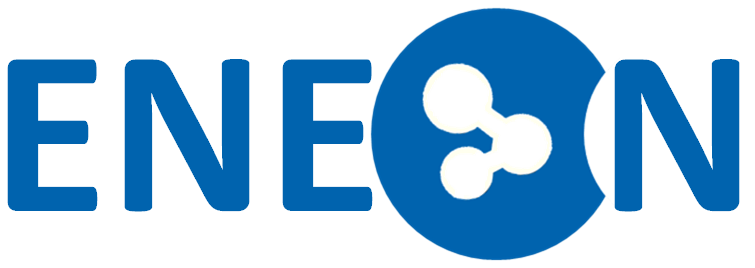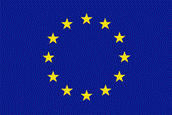Workshop infos
Relevant Links and Documents
|
Announcements:
- [October 13, 2016] Workshop complete sucessfully: The ConnectinGEO Workshop on Gap Analysis and Prioritization and the ENEON Plenary meeting took place at IIASA, Laxenburg, Austria with more than 30 participants representing both the ConnectinGEO partnership and a wide range of European Earth observation networks.
- [June 5, 2016] Workshop announcements are available: The announcements for the Gap Analysis and Prioritization Workshop and the ENEON workshop are available at www.gstss.org/2016_Laxenburg_Gaps and www.gstss.org/2016_Laxenburg_ENEON, respectively. The announcement for the ConnectinGEO Project Meeting is avialable at www.gstss.org/2016_Laxenburg_ConnectinGEO.
- [April 1, 2016] Date of the ConnectinGEO and ENEON Workshops in Laxenburg, Austria fixed: The ConnectinGEO workshop on gap analysis and prioritization and the ENEON workshop will take place in the week of October 10, 2016 in Laxenburg, Austria. These workshops are co-located with a ConnectinGEO project meeting.
|

Participants in the ENEON Plenary.
The workshops addressed key issues associated with the societal benefits of Earth observations and the exploitation of Earth observation for societal policy and decision making.
SCOPE AND OBJECTIVES OF THE GAP ANALYSIS WORKSHOP
| Providing Earth Observation Support to the Monitoring and Implementation of the Sustainable Development Goals: Gaps and Priorities: Solving complex societal issues increasingly depends on information and knowledge derived from Earth observations and in Europe a rich landscape of Earth observation networks and actors aims to collect and process the necessary observations to satisfy these information and knowledge needs. Nevertheless, there are many gaps and the goal is to identify and assess these gaps in support of decisions on which gaps to address with high priority.
|
The Gap Analysis workshop discussed the outcomes of the gap analysis and prioritization performed in the ConnectinGEO project. This gap analysis was guided by the information and knowledge needs resulting from humanity's “Road to Dignity” detailed in the Agenda 2030 and specified in the 17 Sustainable Development Goals (SDGs) agreed upon by the United Nations. Both the monitoring and implementation of actions to achieve these goals require extensive support from Earth observation and science communities. Several directives and crosscuting issues in Europe provided further guidance for the gap analysis.
The workshop provided a forum to review the methodology for gap analysis and prioritization, discussed the relevant gaps and priorities in the European Earth observation networks and developed a strategy to address those gaps that have a high priority assigned.
The objectives of the gap analysis and prioritization workshop were to:
- Assess the ConnectinGEO methodology for gap analysis and prioritization;
- Review the list of gaps identified and the prioritization achieved;
- Produce a final list of gaps with high priority;
- Discuss a strategy to address these gaps and provide recommendations for the European Network of Earth Observation Networks (ENEON) and the European Commission concerning high-priority gaps.
SCOPE AND OBJECTIVES OF THE ENEON WORKSHOP
| Building a collaborative ENEON to inform policies and actions to address complex societal issues: Many in situ networks in Europe collect valuable Earth observations, and European institutions are involved in numerous global networks. A lack of cross-domain collaboration and coordination the interaction between Earth observation communities and policy and decision makers hinders a full exploitation of the integrated observations for societal applications. ENEON aims to develop coordination and collaboration between networks, the processing, and the generation and dissemination of products to better serve the growing societal needs for environmental intelligence.
|
ConnectinGEO is engaged in exploring the benefits and options of constituting a European Network of Earth Observation Networks (ENEON) that encompasses current networks in Europe in a single entity. The ENEON is designed as a forum for discussing gaps in the Earth observation networks and proposing concrete solutions to the European Commission in terms of completeness but also for ensuring continuity of critical infrastructures both in-situ and space based. It also serves as a coordination point for the European contribution to GEOSS with a focus on in-situ networks and encouraging the alignment of a transversal set of Essential Variables that is currently advocated by GEO.
The Objectives of the ENEON workshop were to:
- Bring together the main current Earth Observation networks in Europe, including those that are umbrella initiatives;
- Continue the development of an ENEON strategy from organizational and subject points of view;
- Assess the extent to which ENEON is embedded in the European Earth observation landscape;
- Outline a more general, “ENEON-based” concept that may serve as best-practice/model to be used to achieve similar objectives in other regions of the world;
- Discuss the status of work in the ENEON components and the work for the next year;
- Explore options for ENEON contributions to the GEO Work Programme.
|





